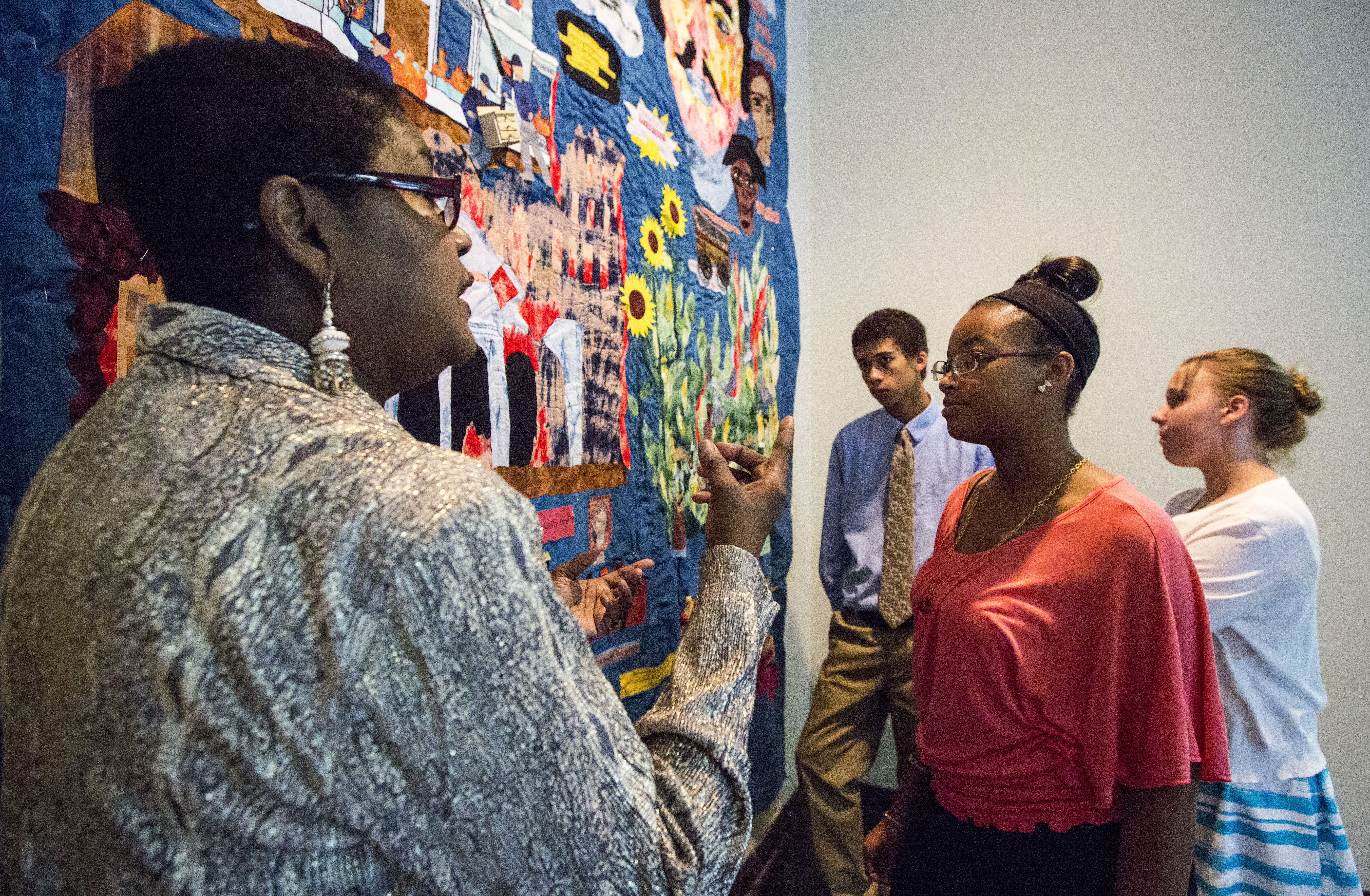Quilt highlights role of African-Americans in Quantrill’s raid and rebuilding Lawrence

Marla Jackson, left, discusses Still

Marla Jackson, left, discusses Still
See the quilt
Marla Jackson’s quilt, “Still We Rise,” was displayed Sunday during a Kansas-themed Family Day at the Spencer Museum of Art. It will be on view during the August Final Friday event at Jackson’s studio and African American Museum and Textile Academy, 720 E. Ninth St., No. 2, in Lawrence’s Warehouse Arts District. The studio also is open by appointment, which can be made by calling Jackson at 371-6682.

A detail of African-Americans working in cornfields from Marla Jackson's quilt, Still

A detail of a scene representing a baby killed in the burning of the Eldridge from Marla Jackson's quilt, Still
They’re not the politicians and community leaders one usually hears about in the best-known stories of Quantrill’s raid. But they were important, and one Lawrence artist is telling their story in her own way — through fabric and thread.
Marla Jackson‘s latest quilt, “Still We Rise,” highlights the role black people played in the raid and the border war that surrounded it. Funded by a grant from Freedom’s Frontier National Heritage Area, Jackson and a handful of area teenagers finished the quilt just in time for Wednesday’s 150th anniversary of the Lawrence massacre.
“It’s to make you really think,” Jackson said. “Most people don’t know African-Americans were part of this.”
The teens — two each from Lawrence, Topeka and Ottawa — have been working with Jackson since April, and the grant enabled Jackson to pay them for their time. They helped her with historical research and creating the roughly 8-by-12-foot quilt, dying fabric, designing the composition and drawing elements to be recreated in fabric.
“There’s a lot of information on there people haven’t heard before,” said Tiffany Jirik, a Topeka 16-year-old who participated in the project. “There’s a lot of it I hadn’t heard, a lot of stuff we’re not told. It’s really cool to see that.”
The most prominent element on the quilt is a large rendition of Quantrill’s face, made of yellow-and-red-dyed fabric to represent the fire of revenge. Next to Quantrill are faces of the famous “Bloody Bill” Anderson and the not-so-famous John Nolan — a free black man who rode with and was a loyal scout for Quantrill.
The quilt also pictures Lawrence’s memorial to white members of the 14th Kansas Cavalry killed in the raid. Below that, a bright yellow patch notes that African-American Union recruits also fell.
More hand-dyed fabric depicts a black baby engulfed in flames at the Eldridge hotel. An inscription quotes a 1937 newspaper obituary for Eldridge cook Peter Jones, which notes that the baby, with Jones at work that day because the baby’s mother was ill, perished in the raid.
Yet another scene depicts black workers harvesting corn and hanging laundry. Hundreds of slaves either escaped to Lawrence or were rounded up by free-state raiders on forays into Missouri before and after Quantrill’s massacre. Often referred to as “contraband” because their status was somewhat undefined in the midst of the war, many of these former slaves went on to find paying jobs, learn to read and write and fight for the Union.
Jackson said her quilt is part of a larger effort on her part to tell the story of blacks in the border war.
Historian Carol Bohl, retired president of the Cass County (Mo.) Historical Society and one of the grant readers for Jackson’s proposal, said it’s an important story to tell.
“That’s where her heart is, finding those stories that have been buried,” Bohl said. “That’s a lot of why Freedom’s Frontier has both Missouri and Kansas in its realm, because you can’t tell one story without the other … and beyond that, you can’t just tell the white story without telling the black.”

